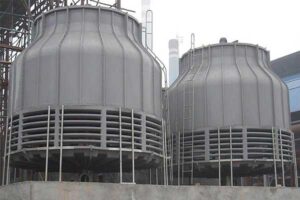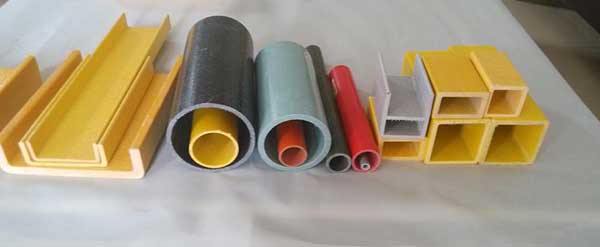What Are Cooling Towers?
Cooling towers are an essential component of many industrial and power generation facilities. They are used to dissipate the heat generated by the cooling of hot water, which is used to cool various types of equipment, including air conditioning systems, chillers, and power generators. One of the key parts of a cooling tower is the structural profile, which is responsible for supporting the weight of the tower and ensuring its stability. In recent years, fiberglass structural profiles have become increasingly popular in cooling tower design due to their many advantages over traditional materials such as steel and concrete.

Cooling Tower
What Are Fiberglass Structural Profiles?
Fiberglass structural profiles are made from a combination of glass fibers and resin and are often used in the construction of cooling towers because they are lightweight, strong, and durable. They are also resistant to corrosion and decay, which makes them a great option for use in harsh environments. In addition, fiberglass structural profiles are highly customizable and can be designed to meet specific requirements, such as a high strength-to-weight ratio and resistance to specific types of loads.

FRP Pultruded Profiles
Application of Fiberglass Structural Profiles in Cooling Towers
Fiberglass structural profiles can be used in a variety of choices in cooling tower design. For example, they can be used as support beams and trusses, as well as for other structural elements such as ladders and platforms. They are also commonly used for the construction of the fill media and the distribution deck, which are both critical parts of the cooling tower. The fill media is responsible for increasing the contact area between the hot water and the air, which increases the cooling efficiency of the tower. The distribution deck is used to evenly distribute the hot water across the fill media, which helps to ensure that the water is cooled as efficiently as possible.
Fiberglass structural profiles have many advantages over traditional materials such as steel and concrete.
- For example, they are much lighter in weight, which makes them much easier to handle and install. This can be especially beneficial in situations where the cooling tower is located in a difficult-to-access area, or where there are weight restrictions that must be considered. Additionally, fiberglass structural profiles are highly corrosion-resistant, which means they require less maintenance over time and have a longer lifespan.
- Another major advantage of fiberglass structural profiles is their ability to be easily customized to meet specific design requirements. This means that they can be designed to be stronger in certain areas or to be more resistant to specific types of loads. This level of flexibility allows engineers to optimize the design of the cooling tower and ensure that it is as efficient as possible.
In conclusion, fiberglass structural profiles are an excellent choice for use in cooling tower design due to their many advantages over traditional materials. They are lightweight, strong, and durable, and are resistant to corrosion and decay. Additionally, they can be easily customized to meet specific design requirements, which allows engineers to optimize the design of the cooling tower and ensure that it is as efficient as possible. Overall, fiberglass structural profiles offer a cost-effective and reliable solution for cooling tower design, making them a popular choice among engineers and facility managers alike.
 info@unicomposite.com
info@unicomposite.com


























